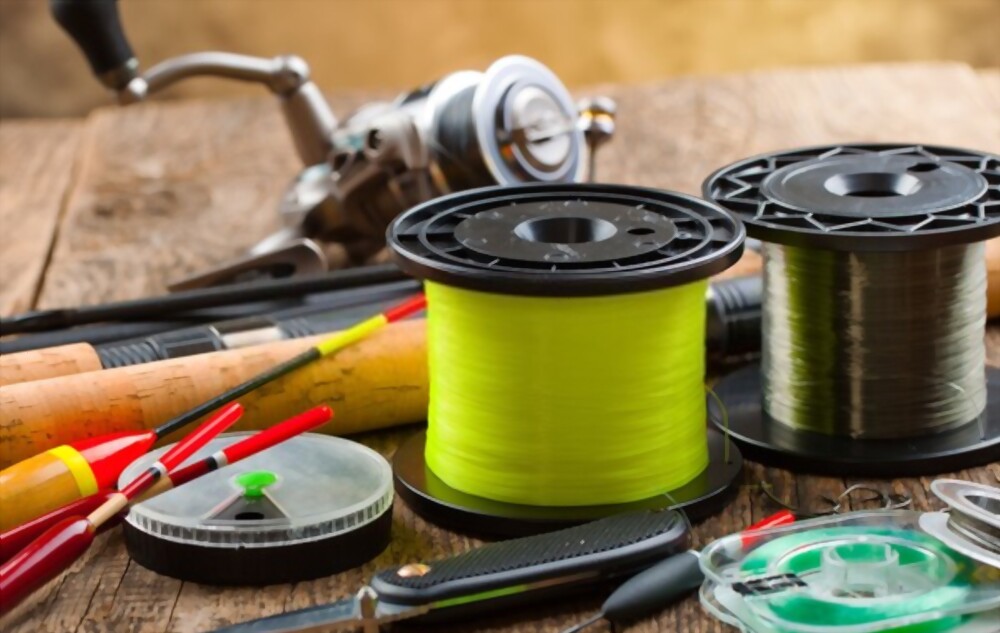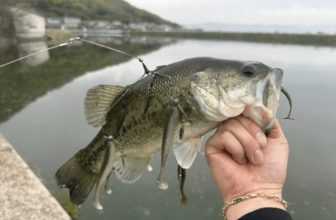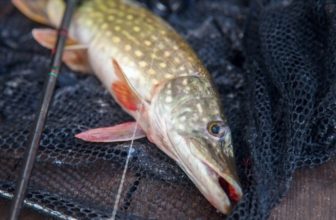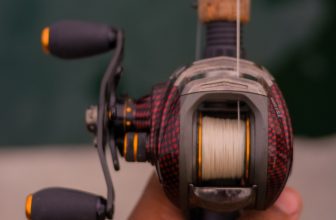
Are you tired of losing big catches because your fishing line just can’t handle the weight? It’s time to choose your fishing line size wisely and catch boldly!
Understanding fishing line strength and weight capacity is crucial for any angler, whether you’re a beginner or a seasoned pro. Choosing the right fishing line size not only improves your chances of hooking and landing your desired catch, but it also helps to prevent line breakage and unnecessary frustration.
With factors such as fish species, fishing location, and line type to consider, it can be overwhelming to decide on the perfect size. But fear not, our comprehensive fishing line size chart and tips will help you make informed decisions and reel in those trophy fish with confidence.
Understanding Fishing Line Strength and Weight Capacity
Don’t underestimate the power of understanding fishing line strength and weight capacity; it could mean the difference between a trophy catch and a disappointing day on the water.
Fishing line strength refers to the amount of weight the line can support without breaking. It is measured in pounds and indicated on the packaging. A higher pound test means a stronger line that can handle heavier fish and rougher conditions.
Weight capacity, on the other hand, refers to the amount of weight a line can cast without snapping. It is determined by the thickness and material of the line. A heavier line will cast more weight, but it may also be more visible to fish and less sensitive to bites. A lighter line will be more sensitive and less visible, but it may not be able to cast as much weight.
When choosing a fishing line, it’s important to consider both the strength and weight capacity to ensure that it can handle the fish you’re targeting and the conditions you’ll be fishing in. A line that is too weak or too light will break easily, while a line that is too heavy or too thick may be too visible or less sensitive to bites.
By understanding these factors, you can choose a fishing line that will help you catch boldly and bring home the trophy catch you’ve been dreaming of.
Factors to Consider When Choosing Fishing Line Size
You’ll want to take into account several key factors if you’re going to have any chance of reeling in that big one. Don’t just choose the first fishing line size you see in the store. Consider these factors before you make your purchase:
- The fish you’re targeting: Different fish species require different line sizes. If you’re going after a smaller fish like crappie or bluegill, a lighter line will do just fine. However, if you’re going after larger game fish like bass or pike, you’ll want a heavier line that can handle the weight and fight of those fish.
- The type of water you’re fishing in: The clarity and depth of the water can also play a role in choosing the right line size. If you’re fishing in clearer water, you may want to use a lighter line that won’t spook the fish. On the other hand, if you’re fishing in deeper water or in areas with a lot of cover, a heavier line can help you pull the fish out without getting snagged.
- Your personal preference and experience level: Some fishermen prefer a specific line size because it’s what they’re used to or because they’ve had success with it in the past. Others may be more experimental and willing to try different sizes to see what works best for them. Ultimately, the line size you choose should be comfortable for you to use and within your skill level.
Choosing the right fishing line size can make a big difference in your success on the water. Take the time to consider these factors before making your purchase so you can have confidence in your choice. Remember, the right line size can help you catch more fish and enjoy your time on the water even more.
Matching Fishing Line Size to Fish Species
When targeting different fish species, it’s important to match the proper line size to ensure a successful and enjoyable fishing experience. The appropriate line size will depend on the weight and behavior of the fish you are trying to catch. Using a line that is too light can result in the line breaking, while using a line that is too heavy can make it difficult to cast and may spook the fish.
To help you choose the right fishing line size, refer to the chart below. This chart outlines the recommended line sizes for common fish species, based on their weight and behavior. For example, if you are targeting smallmouth bass, a 6-8lb line is recommended. For larger fish, such as musky or tarpon, you may need to use a heavier line.
| Fish Species | Weight | Recommended Line Size |
|---|---|---|
| Smallmouth Bass | 1-5lbs | 6-8lb |
| Largemouth Bass | 1-10lbs | 8-12lb |
| Trout | 1-5lbs | 4-6lb |
| Musky | 30-50lbs | 80-100lb |
Using the appropriate fishing line size can make all the difference in your fishing success. It’s important to do your research and choose the right line for the fish species you are targeting. By matching your line size to the weight and behavior of the fish, you’ll have a better chance of landing your catch and enjoying your time on the water.
Fishing Line Size Chart: A Comprehensive Guide
To get a better understanding of which fishing line is recommended for specific fish species, take a look at this comprehensive guide. The fishing line size chart is a useful tool that can help you determine the appropriate line size for your fishing needs.
Here are some things to keep in mind when using the chart:
- The recommended line size for a specific fishing application is typically based on the weight of the fish you’re targeting. Keep this in mind when selecting your line size.
- The type of fishing you’ll be doing can also impact the line size you should choose. For example, if you’re fishing in heavy cover, you may want to opt for a heavier line to ensure you can haul in your catch.
- The fishing line size chart can also be helpful in determining the appropriate line size for different types of lures. This is because different lures require different line strengths to ensure proper casting and retrieval.
- The conditions you’re fishing in, such as wind and water clarity, can also impact the line size you should choose. In general, clearer water and calmer conditions may require lighter line sizes.
Keep in mind that the fishing line size chart is just a guide, and you may need to experiment with different line sizes to find what works best for you and the fish you’re targeting.
Using the fishing line size chart can help you choose the right line size for your specific fishing needs. By taking into consideration factors such as fish species, fishing conditions, and lure types, you can increase your chances of a successful catch. Remember to use the chart as a guide, and don’t be afraid to experiment with different line sizes to find what works best for you.
Tips for Choosing the Right Fishing Line Size for Your Next Adventure
Before embarking on your next fishing adventure, consider factors such as the fish species, fishing conditions, and lure types in order to select the most appropriate fishing line size. Choosing the right fishing line size can make all the difference in your catch. A line that is too thin or too thick can make it harder to catch fish and may even break while reeling in a big catch.
To help you choose the right fishing line size, consider the following factors:
| Fish Species | Fishing Conditions | Lure Type |
|---|---|---|
| Small fish | Calm waters | Lightweight lures |
| Medium fish | Moderate currents | Medium-weight lures |
| Large fish | Strong currents | Heavyweight lures |
Once you have determined the fish species, fishing conditions, and lure types, you can choose the appropriate fishing line size. For small fish in calm waters with lightweight lures, a 2-4 lb test line would be ideal. For medium fish in moderate currents with medium-weight lures, a 6-10 lb test line would be more appropriate. And for large fish in strong currents with heavyweight lures, a 12-25 lb test line would be necessary.
Remember to always check the fishing regulations in your area and the manufacturer’s recommendations for the specific fishing gear you are using. By selecting the right fishing line size, you can increase your chances of success on your next fishing adventure. So, choose wisely and catch boldly!
Frequently Asked Questions
What is the best fishing line size for beginners?
For beginners, the best fishing line size is usually between 6-12 pound test. This range is versatile enough to handle a variety of fish species and fishing conditions. Don’t forget to match your line with the weight of your fishing rod.
Can fishing line size affect the color of the fish caught?
Yes, the fishing line size can affect the color of the fish caught. A heavier line may spook the fish, causing it to change color or behavior. Choose a line that matches the fish and the conditions.
How does water temperature affect the choice of fishing line size?
To choose the right fishing line size based on water temperature, consider the fish species you’re targeting and the depth you’ll be fishing at. Warmer water usually requires heavier line, while colder water calls for lighter line.
Is there a specific fishing line size recommended for catching bigger fish?
If you want to catch bigger fish, you should use a fishing line with a higher pound test. This will give you the strength needed to reel in larger fish without the line snapping. Make sure to choose the right line for the type of fishing you plan on doing.
Can the type of fishing reel affect the choice of fishing line size?
Yes, the type of fishing reel you use can affect the choice of fishing line size. Different reels require different line sizes and strengths, so be sure to choose the right one for your reel to maximize your chances of catching big fish.
Conclusion
Congratulations! You’ve made it to the end of our comprehensive guide to fishing line sizes. By now, you should have a better understanding of how to choose the right fishing line size for your next adventure.
Remember, when selecting a fishing line size, you need to consider the fish species, fishing location, and the type of lure or bait you plan to use.
With the help of our fishing line size chart and the tips we’ve provided, you can confidently choose the right line for your next fishing trip.
So, choose wisely, and catch boldly! Happy fishing!







